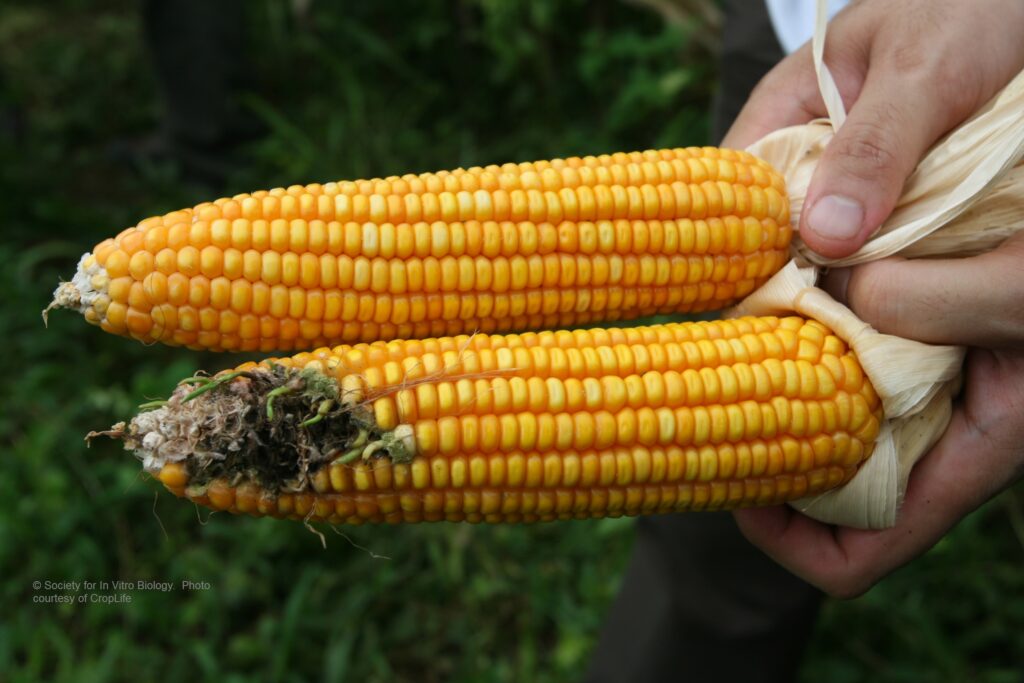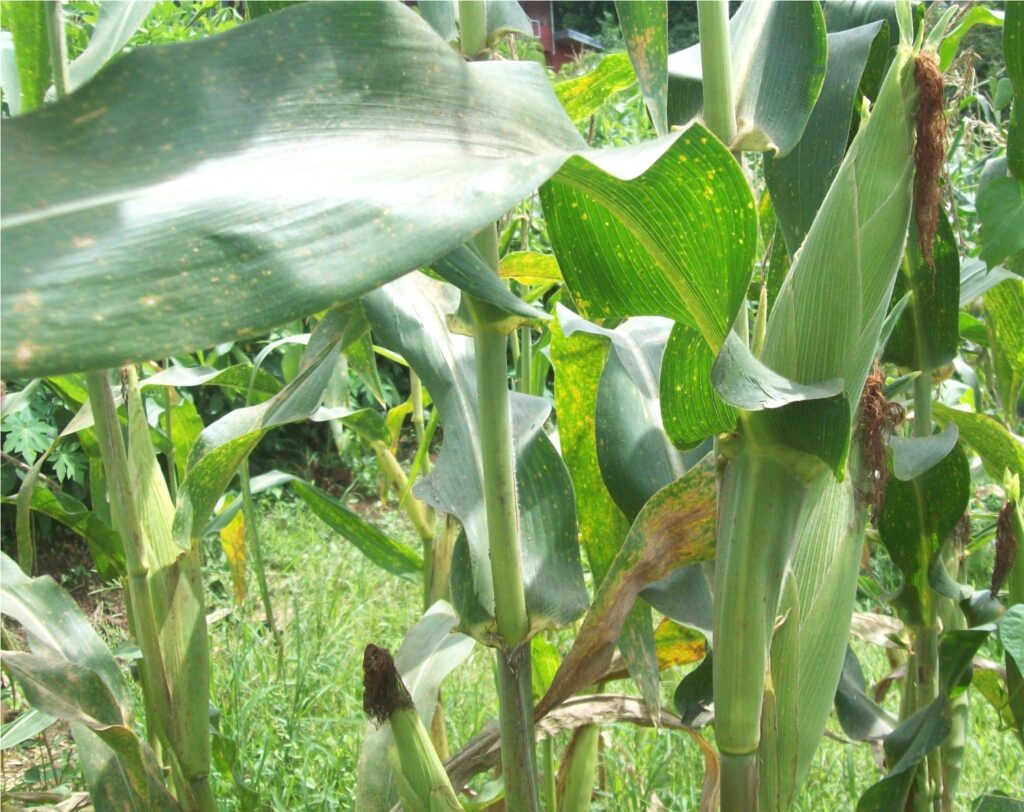MORE FILIPINO FARMERS NOW PLANT BIOTECH CORN
Text and Photos by Henrylito D. Tacio
Additional Photo courtesy of BIOTECH
Like his father before him, Ryan Lising is a corn farmer, and corn is his family’s main source of income. Corn gives him money not only to send his four children to school, but also to help him expand his business and buy his own farm machinery. His crop also allows him to assist other corn farmers in their community.
But unlike his father who planted white corn before him, Lising plants biotech corn (Bt corn), a crop that has made him an important person in their farming community of Mandani in Magalang, Pampanga.

Lising started planting biotech corn in 2003 after the government approved the commercial planting of Bt corn in the country.
Lising became one of the early adopters of Bt corn when it was introduced by seed company technicians. Though uncertain about the new corn that the technicians introduced in the farm demonstration, his frustrations with white corn – his crop then – urged him to try it.
Following his first Bt corn harvest, it became clear to Lising that there was no turning back. He knew that it was the beginning of a new life for him and his family, who has faced so many hardships in trying to make ends meet.
“When I realized that I will earn more if I plant Bt corn, I decided to add two more children to my brood. Sending my children to school was not that difficult anymore,” he said then.
When stacked traits corn was approved for commercial planting in the country, Lising did not hesitate to plant it on his farm which has grown from 1.5 to more than 20 hectares.
It was a decision he never regretted.

After a decade of planting Bt corn, his life and that of his family has completely changed. His increased and steady income from planting Bt corn allowed him to explore other business opportunities.
“I have a new motorcycle now to replace the stolen one,” he admitted, “and I was able to buy my own farm machines. I have two trucks and two tractors, and I am getting a new, bigger tractor soon.”
Lising also has more time to spend with his family because he does not need to spend a lot of time on his farm. He also found other means of livelihood in their community.
“The Philippines became the first country in Southeast Asia to plant a biotech crop after Bt corn commercialization started in 2003,” reports the Laguna-based International Service for the Acquisition of Agri-biotech Applications (ISAAA).
In 2017, the Philippines ranked 13th in biotech crop area among 24 countries. In Asia, Bt corn is also planted in China, Indonesia, Japan, Malaysia, South Korea and Taiwan. Other countries planting the crop are the United States, Canada, Switzerland, and some parts of South America and Africa.
In 2017, the area planted to Bt corn decreased to 642,000 hectares from 812,000 hectares in 2016. Bt corn area and adoption rate decreased because according to industry analysts, there was a proliferation of counterfeit biotech maize seeds in the country.
“The adoption rate of biotech maize in 2017 was 46.5%, compared to 65% in 2016,” ISAAA reports. “The number of small resource poor farmers, growing an average 2 hectares of Bt corn in the Philippines in 2017 was estimated at 470,500.”
So far, only Bt corn is currently the only biotech crop being planted commercially in the Philippines. “The area occupied in 2017 by the stacked insect resistant/herbicide tolerant (IR/ HT) maize was 607,000 hectares or 94.5% of the total area planted for Bt corn; and 5.5% for herbicide tolerant corn at 35,000 hectares,” ISAAA states.
A total of 13 Bt corn events have been approved for commercial planting in the Philippines since 2002; these are 3 single Bt, 4 single HT, 2 pyramided Bt genes, and 4 Bt/HT stacked traits.
In addition, a total of 88 biotech crops and products are currently approved for direct use as food, feed, and for processing in the Philippines that include alfalfa, canola, cotton, maize, potato, rice, soybean, and sugar beet.
Since the Supreme Court of the Philippines ruled in December 2015 that the Administrative Order No. 8 is invalid, no new approval has been granted by the Department of Agriculture’s Bureau of Plant Industry for cultivation.

But there are two crops that are waiting for commercialization in the country: Bt eggplant and golden rice. The latter might be available for crop production by 2023, according to some reports.
The fruit and shoot borer resistant Bt eggplant project led by the Institute of Plant Breeding of the University of the Philippines at Los Baños (IPB-UPLB), was a royalty-free technology donated by the Maharashtra Hybrid Seed Company (Mahyco) through a sublicense agreement.
According to ISAAA, the proponents already completed field trials of promising hybrid varieties in the approved multi-location trial sites in Luzon and Mindanao in 2012. In July 2016, the Supreme Court unanimously reversed its December 2015 decision and granted all motions for reconsideration by the proponents and interested parties. Since then, the team has continued its collaboration with Cornell University, and published results from field trials.
Golden rice, on the other hand, is a beta carotene-fortified rice being developed by the Philippine Rice Research Institute (PhilRice) and the International Rice Research Institute (IRRI).
Two seasons of confined field testing of Golden Rice have been completed in early 2016 under the strict monitoring of prescribed government bodies. The proponents have filed an application to secure a Food, Feed, Processing (FFP) permit for direct use. The FFP application was also sent to the US Food and Drug Administration (US FDA), Health Canada, and Food Standards Australia New Zealand (FSANZ).
Now, going back to Bt corn.
Asian corn borer is a major pest that ruins up to 80% of traditional corn varieties in the country. It feeds on the plant stem, leaves and ears even before corn is harvested.
Bt stands for Bacillus thuringiensis, a common soil bacterium so called because it was first isolated in the Thuringia region of Germany. It produces a protein that paralyzes the larvae of some harmful insects.
Scientists, through genetic engineering, have taken the Bt gene responsible for the production of the insecticidal protein from the bacterium and incorporated it into the genome of plants. As such, the plants have a built-in mechanism of protection against targeted pests, including Asian corn borer.
“The farm level economic benefit of planting Bt corn in the Philippines in the period 2003 to 2016 is estimated to have reached US$724 million,” ISAAA reports. “For 2016 alone, the net national impact of Bt corn on farm income was estimated at US$82 million.”
According to the Department of Agriculture, the corn producing areas in the country are located in Isabela, the rest of Cagayan Valley, South and North Cotabato, Sarangani, and Sultan Kudarat.
Meanwhile, from just being a corn farmer, Lising has also become a corn buyer. “I go to different corn farms in our village to see their corn,” he says. “I am now a corn buyer.”
Lising uses his two trucks to transport the corn that he buys from the various farms in their village. He also buys and transports other agricultural produce such as sweet corn and vegetables, and helps the people in their village by providing them with jobs, an undertaking that makes him proud.
“Biotech corn changed my life completely. After years of planting it, I am now an important man,” Lising points out.

